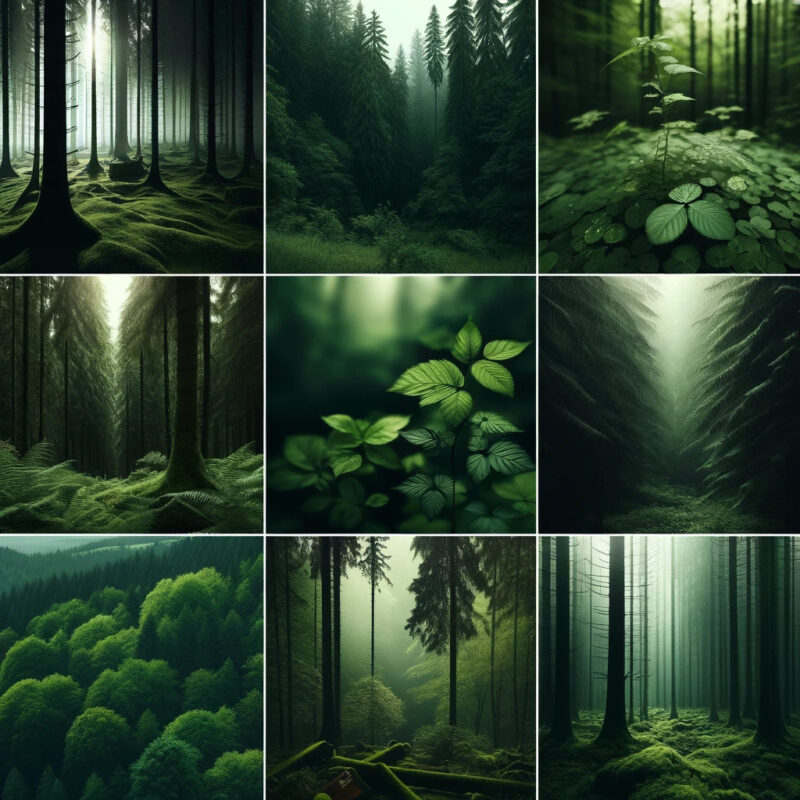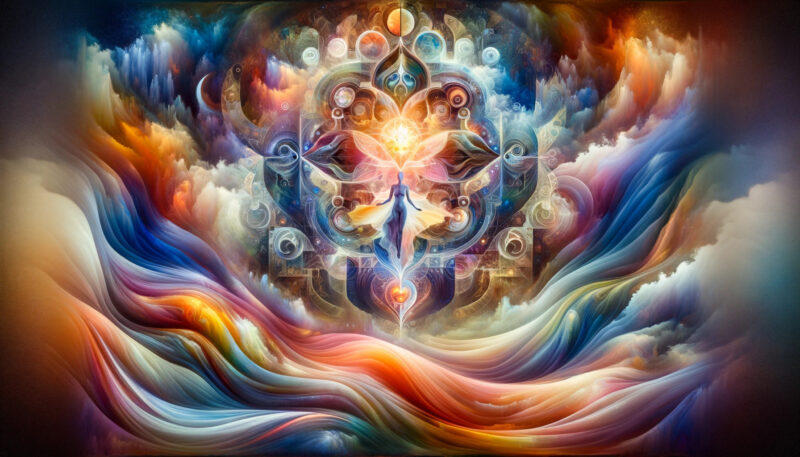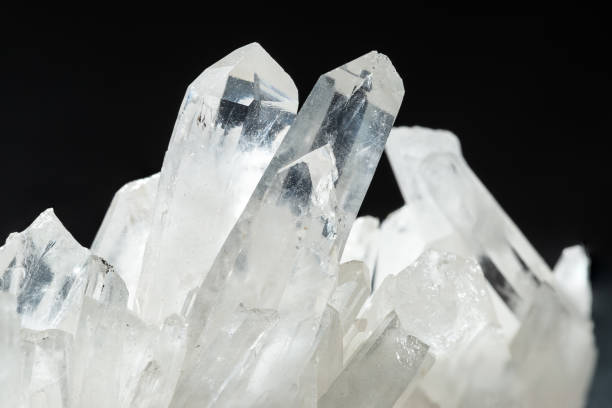101 Spiritual Color Symbolism And Their Meanings
Colors play a significant role in our lives, often evoking deep emotional and spiritual responses.
In many cultures and religions, colors have profound meanings and are used in rituals and ceremonies to convey specific messages.
Let’s dive deep into spiritual color symbolism and uncover their hidden meanings.
Spiritual Color Meanings
Colors have been used for centuries in various spiritual practices to signify different energies and intentions. Let’s explore some common colors and their spiritual significance:
- Spiritual color meanings: From the calming blues to the fiery reds, each color has a unique spiritual vibration. For instance, blue often symbolizes peace and tranquility, while red can denote passion and energy.
- Color significance in spirituality: Different spiritual practices have specific colors associated with them. For instance, green is often linked with healing and growth in many traditions.
- Mystical color associations: Some believe colors can connect us to higher realms. Gold, for example, is often seen as a bridge to divine energies.
- Aura colors and their meanings: Auras are believed to be energy fields surrounding every living being. These colors can give insights into one’s emotional and spiritual state.
- Chakra color significance: In practices like yoga and meditation, the seven chakras or energy centers in the body are each associated with a specific color, from the root chakra’s red to the crown chakra’s violet.
Each color, with its unique vibration and energy, can guide us, heal us, and connect us to the spiritual world.
By understanding their meanings, we can harness their power in our daily lives.
Red
Symbolism and Meaning: Red, often referred to as the color of passion, stands as a powerful symbol across many cultures.
It’s frequently associated with intense emotions, ranging from love, lust, and desire to anger and danger.
In Eastern cultures, red is auspicious and represents good fortune, prosperity, and happiness.
For many, red symbolizes courage, vitality, and confidence. Its boldness demands attention, making it a popular choice in fashion, advertising, and design.
Blue
Symbolism and Meaning: Blue is the embodiment of calmness and tranquility. It’s reminiscent of the vast sky and deep oceans, evoking feelings of stability, trust, and depth.
Spiritually, blue is often linked to introspection and intuition. It’s also symbolic of wisdom, loyalty, and truth.
In many cultures, blue has protective qualities, warding off evil and bringing peace.
Green
Symbolism and Meaning: Green is the color of life, renewal, and nature. It represents growth, harmony, and fertility. In many cultures, green symbolizes hope and prosperity.
Its association with nature makes it a symbol of environmental causes and sustainability. On the emotional spectrum, green often brings about feelings of calm and relaxation.
Yellow
Symbolism and Meaning: Bright and cheerful, yellow is the color of happiness, optimism, and enlightenment.
It’s reminiscent of the sun, symbolizing warmth, energy, and positivity. Yellow can also represent caution or attention, as seen in traffic lights and signs. In some cultures, yellow holds religious significance and is seen as sacred.
Orange
Symbolism and Meaning: A blend of red’s passion and yellow’s joy, orange is vibrant and energetic. It symbolizes creativity, enthusiasm, and encouragement.
In many Eastern cultures, orange is associated with spirituality and meditation. It’s a color that can both stimulate appetite and promote a sense of general well-being.
Purple
Symbolism and Meaning: Purple is often associated with royalty, luxury, and power due to its historical significance as a costly dye. It blends the stability of blue with the energy of red.
Spiritually, purple is linked with mysticism, magic, and the subconscious. It can also represent wisdom, dignity, and ambition.

Pink
Symbolism and Meaning: Pink embodies love, tenderness, and compassion. It’s often seen as a color of hope, nurturing, and sensitivity.
While light pink evokes feelings of innocence and sweetness, darker shades can signify gratitude and appreciation.
Brown
Symbolism and Meaning: Brown is the color of the Earth, symbolizing stability, reliability, and resilience.
It’s often associated with things that are natural, organic, and simple. Brown can evoke feelings of warmth, comfort, and security.
Black
Symbolism and Meaning: Black is a color of depth and contrast. It symbolizes mystery, power, and sophistication.
In many cultures, black represents mourning and loss, but it’s also a symbol of strength and authority. In fashion, black is timeless and denotes elegance.

White
Symbolism and Meaning: White represents purity, innocence, and light. It’s often associated with perfection, safety, and cleanliness.
In many cultures, white symbolizes beginnings, spirituality, and enlightenment. It’s a canvas of possibilities.
Gray
Symbolism and Meaning: Gray is neutral and balanced. It’s a color that signifies compromise, as it sits between the extremes of black and white.
Gray can represent formality, sophistication, and a transitional state.
Gold
Symbolism and Meaning: Gold is the color of success, wealth, and prestige. It represents luxury, quality, and achievement.
Spiritually, gold is linked to divinity, enlightenment, and wisdom. It’s a symbol of grandeur and prosperity.

Silver
Symbolism and Meaning: Silver is sleek and modern, often associated with clarity, reflection, and sensitivity.
It’s symbolic of purity, femininity, and intuition. In many cultures, silver represents lunar energies, unlike gold’s solar associations.
Beige
Symbolism and Meaning: Beige is subtle and versatile. It represents neutrality, calmness, and simplicity.
Often associated with the natural and organic, beige evokes feelings of warmth, wholesomeness, and dependability.
Turquoise
Symbolism and Meaning: Turquoise blends blue’s depth and green’s growth. It’s associated with refreshing waters and tropical paradises.
Turquoise symbolizes healing, protection, and tranquility. It’s often used in cultures to ward off evil spirits and bring about good luck.
Teal
Symbolism and Meaning: Teal is a medium to dark greenish-blue hue that embodies the calm of blue with the refreshing balance of green.
It’s often linked to sophistication and communication. Teal can represent a protective shield, suggesting reliability and trustworthiness.
Lime
Symbolism and Meaning: Lime is a bright, vibrant shade of green that exudes energy and vitality.
It’s reminiscent of fresh limes and tropical settings. Lime green symbolizes growth, freshness, creativity, and a zest for life.
Lavender
Symbolism and Meaning: Lavender, a light purple hue with hints of blue, invokes feelings of serenity and calmness.
It’s named after the fragrant lavender flower and often symbolizes femininity, grace, and elegance. Lavender is also associated with spiritual healing and tranquility.
Maroon
Symbolism and Meaning: Maroon is a dark red hue that is rich and intense. It’s often associated with power, ambition, and sophistication.
Maroon can evoke strong emotions, representing controlled passion and deep commitment.
Olive
Symbolism and Meaning: Olive, a muted shade of green, is reminiscent of olive trees and their fruit. It signifies peace, harmony, and growth. Olive green is often linked to nature, earthiness, and military strength.
Peach
Symbolism and Meaning: Peach is a soft hue that combines pink and orange’s warmth. It embodies innocence, warmth, and approachability.
Peach is often linked to sweetness, friendliness, and new beginnings.
Coral
Symbolism and Meaning: Coral, a blend of pink and orange, exudes warmth, vitality, and joy. It’s reminiscent of tropical coral reefs, symbolizing life, energy, and natural beauty.
Coral can also represent optimism and a zest for life.
Aqua
Symbolism and Meaning: Aqua is a light blue-green color reminiscent of clear tropical waters. It embodies freshness, clarity, and rejuvenation. Aqua is often linked to healing, protection, and emotional balance.

Indigo
Symbolism and Meaning: Indigo is a deep shade of blue with purple undertones. It’s often associated with intuition, perception, and higher knowledge. Historically, indigo dye was precious, linking the color to luxury and nobility.
Violet
Symbolism and Meaning: Violet sits between purple and blue in the spectrum. It represents spirituality, imagination, and dreams. Violet can invoke feelings of mystery, magic, and the unknown.
Magenta
Symbolism and Meaning: Magenta is a vivid purplish-red hue. It’s a color of harmony, balance, and transformation. Magenta can inspire creativity, free-thinking, and a break from traditional boundaries.
Tan
Symbolism and Meaning: Tan is a light brown shade that embodies neutrality, simplicity, and resilience. It’s often linked to nature, stability, and a grounded presence. Tan can evoke feelings of warmth, dependability, and wholesomeness.
Navy
Symbolism and Meaning: Navy is a very dark shade of blue, symbolizing strength, authority, and elegance. It’s often associated with professionalism, trustworthiness, and stability. The Navy can evoke feelings of depth, power, and tradition.
Cyan
Symbolism and Meaning: Cyan is a bright blue-green color between green and blue in the spectrum. It embodies clarity, modernity, and technological advancement. Cyan is often linked to communication, clarity, and innovation.
Burgundy
Symbolism and Meaning: Burgundy is a deep, dark red hue reminiscent of the wine from which it gets its name. It represents sophistication, richness, and ambition. Burgundy can evoke strong emotions of power, passion, and depth.
Emerald
Symbolism and Meaning: Emerald is a radiant green hue that evokes images of precious gemstones. It symbolizes growth, renewal, and abundance. Often associated with the heart chakra, emerald green signifies healing, balance, and vitality.
Jade
Symbolism and Meaning: Jade is a soft green color reminiscent of the ornamental mineral widely used in art and jewelry. It represents purity, serenity, and wisdom. In many cultures, jade is believed to bring good luck, protection, and harmony.
Ruby
Symbolism and Meaning: Ruby is a deep, passionate red that resembles the gemstone. It symbolizes love, energy, and power. Rubies are often associated with desire, courage, and an invigorating force.
Amber
Symbolism and Meaning: Amber is a golden-yellow hue, echoing the fossilized tree resin. It embodies warmth, ancient wisdom, and timelessness. Amber is often linked to clarity, healing, and protection.
Charcoal
Symbolism and Meaning: Charcoal is a near-black shade reminiscent of burnt wood. It signifies mystery, strength, and sophistication. Charcoal is often associated with depth, seriousness, and a grounded nature.
Periwinkle
Symbolism and Meaning: Periwinkle is a pale tint of purple with a slight blue touch. It represents serenity, calmness, and whimsy. Periwinkle is often linked to dreaminess, nostalgia, and delicate feelings.
Salmon
Symbolism and Meaning: Salmon is a pinkish-orange hue that resembles the color of the fish. It embodies health, vitality, and energy. Salmon is often linked to harmony, intuition, and adaptability.
Plum
Symbolism and Meaning: Plum is a deep purple-red color. It signifies richness, luxury, and depth. Plums are often associated with sensuality, mystery, and nobility.
Taupe
Symbolism and Meaning: Taupe is a dark brown-gray color that embodies neutrality, versatility, and understated elegance. It’s often linked to maturity, stability, and reliability.
Cerulean
Symbolism and Meaning: Cerulean is a bright blue hue reminiscent of clear skies. It represents peace, tranquility, and infinity. Cerulean is often associated with inspiration, spirituality, and expansiveness.
Rose
Symbolism and Meaning: Rose is a soft pink hue that evokes the flower. It symbolizes love, gentleness, and femininity. Roses often represent beauty, romance, and passion.
Ivory
Symbolism and Meaning: Ivory is an off-white color, echoing the material from which it gets its name. It embodies purity, elegance, and simplicity. Ivory is often linked to calmness, luxury, and understated beauty.
Champagne
Symbolism and Meaning: Champagne is a pale gold color reminiscent of sparkling wine. It signifies celebration, sophistication, and joy. Champagne is often associated with special occasions, elegance, and affluence.
Slate
Symbolism and Meaning: Slate is a dark gray-blue color. It represents stability, reliability, and balance. Slate is often linked to professionalism, seriousness, and a cool, subdued strength.
Brass
Symbolism and Meaning: Brass is a metallic gold-brown hue that embodies warmth, durability, and timelessness. As a metal, brass is malleable yet strong, symbolizing resilience, tradition, and a rich history.
Copper
Symbolism and Meaning: Copper is a reddish-brown metallic hue that evokes the naturally occurring metal. It symbolizes warmth, conductivity, and adaptability. Copper is often associated with beauty, value, and life energy.
Bronze
Symbolism and Meaning: Bronze is a brownish-yellow metal reminiscent of ancient statues and medals. It represents durability, strength, and history. Bronze is often linked to third-place achievements, age-old wisdom, and resilience.
Mint
Symbolism and Meaning: Mint is a light, fresh green that brings to mind the aromatic herb. It embodies freshness, vibrancy, and clarity. Mint is often associated with new beginnings, growth, and revitalization.
Fuchsia
Symbolism and Meaning: Fuchsia is a vivid purplish-red color. It signifies confidence, vivacity, and audacity. Fuchsia is often linked to femininity, extravagance, and lively energy.
Crimson
Symbolism and Meaning: Crimson is a deep, rich red hue. It represents passion, desire, and intensity. Crimson is often associated with love, valor, and determination.
Raspberry
Symbolism and Meaning: Raspberry is a deep pink-red shade reminiscent of the berry. It embodies sweetness, richness, and indulgence. Raspberries often symbolize temptation, delight, and a zest for life.
Azure
Symbolism and Meaning: Azure is a bright, clear blue that evokes the sky on a sunny day. It represents tranquility, expansiveness, and infinity. Azure is often linked to dreams, inspiration, and calmness.
Ochre
Symbolism and Meaning: Ochre is an earthy yellow-brown. It embodies warmth, nature, and antiquity. Ochre is often associated with the earth’s natural pigments, grounding, and stability.
Chocolate
Symbolism and Meaning: Chocolate is a deep, rich brown, reminiscent of the delectable treat. It signifies indulgence, warmth, and comfort. Chocolate often symbolizes sweetness, luxury, and romance.
Mauve
Symbolism and Meaning: Mauve is a pale, grayish-purple hue. It represents elegance, grace, and nostalgia. Mauve is often linked to refinement, sentimentality, and a touch of mystery.
Forest Green
Symbolism and Meaning: Forest Green is a dark shade of green, evoking dense woods and nature. It embodies mystery, depth, and growth. This color is often linked to tranquility, richness, and a connection to the earth.

Lemon
Symbolism and Meaning: Lemon is a bright, zesty yellow reminiscent of the citrus fruit. It signifies freshness, energy, and clarity. Lemon often symbolizes optimism, brightness, and a zest for life.
Sky Blue
Symbolism and Meaning: Sky Blue is a light, airy blue that brings to mind a clear day. It represents serenity, vastness, and freedom. Sky Blue is often linked to hope, dreams, and peacefulness.
Orchid
Symbolism and Meaning: Orchid is a pale, purplish-pink hue. It embodies beauty, elegance, and rarity. Orchids are often associated with luxury, femininity, and exotic charm.
Mulberry
Symbolism and Meaning: Mulberry is a deep, purplish-red color. It signifies richness, depth, and luxury. Mulberries often represent wisdom, opulence, and a touch of the exotic.
Khaki
Symbolism and Meaning: Khaki is a light, earthy brown, often linked with military uniforms. It embodies practicality, reliability, and neutrality. Khaki is often associated with ruggedness, adventure, and down-to-earth nature.
Cobalt
Symbolism and Meaning: Cobalt is a deep, intense blue reminiscent of the chemical element from which it gets its name. It represents depth, stability, and richness. Cobalt is often associated with depth of emotion, creativity, and the ocean’s vastness.
Onyx
Symbolism and Meaning: Onyx is a deep black or sometimes white stone. It embodies strength, protection, and mystery. Onyx is often linked to grounding, resilience, and deflecting negative energy.
Cream
Symbolism and Meaning: Cream is a pale, off-white hue, often reminiscent of dairy cream. It signifies softness, purity, and elegance. Cream is associated with simplicity, understated luxury, and warmth.
Saffron
Symbolism and Meaning: Saffron is a vibrant yellow-orange spice, and its color embodies warmth, richness, and luxury. It’s often linked to spirituality, healing, and exoticism.
Bubblegum
Symbolism and Meaning: Bubblegum is a playful, bright pink hue. It represents fun, youthfulness, and sweetness. This color is linked to carefree moments, innocence, and joy.
Mustard
Symbolism and Meaning: Mustard is a deep, warm yellow reminiscent of the condiment. It signifies warmth, energy, and transition. Mustard is often associated with change, vibrancy, and earthiness.
Pistachio
Symbolism and Meaning: Pistachio is a light green, much like the nut named after. It embodies freshness, lightness, and growth. Pistachio is linked to new beginnings, rejuvenation, and nature.
Pearl
Symbolism and Meaning: Pearl is a soft, iridescent white. It represents purity, innocence, and luxury. Pearls are often associated with timeless beauty, value, and wisdom.
Midnight Blue
Symbolism and Meaning: Midnight Blue is the deep blue of a night sky. It embodies mystery, depth, and the unknown. This color is often linked to introspection, the cosmos, and tranquility.
Goldenrod
Symbolism and Meaning: Goldenrod is a bright, yellow-gold color. It signifies warmth, brightness, and positivity. Goldenrod is associated with joy, optimism, and the changing seasons.
Mahogany
Symbolism and Meaning: Mahogany is a rich, reddish-brown wood color. It represents strength, durability, and luxury. Mahogany is often linked to sophistication, stability, and timelessness.
Sienna
Symbolism and Meaning: Sienna is an earthy reddish-brown. It embodies warmth, nature, and rusticity. Sienna is often associated with the earth, simplicity, and a grounded nature.
Fern
Symbolism and Meaning: Fern is a medium green hue reminiscent of the plant. It signifies growth, nature, and renewal. Fern is linked to peacefulness, organic growth, and the natural world.
Sepia
Symbolism and Meaning: Sepia is a reddish-brown tint often associated with old photographs. It embodies nostalgia, history, and memory. Sepia is linked to the past, timelessness, and moments captured in time.
Moss
Symbolism and Meaning: Moss is a muted green color, bringing to mind the soft plants found in forests. It represents grounding, growth, and calm. Moss is often associated with nature, tranquility, and belonging.
Tangerine
Symbolism and Meaning: Tangerine is a vibrant orange hue. It signifies energy, zest, and warmth. Tangerine is linked to enthusiasm, creativity, and a sense of adventure.
Canary
Symbolism and Meaning: Canary is a bright yellow shade. It embodies joy, brightness, and alertness. Canary is often associated with happiness, warmth, and a cheerful disposition.
Grape
Symbolism and Meaning: Grape is a deep purple hue reminiscent of the fruit. It represents luxury, depth, and richness. Grape is linked to opulence, mystery, and a touch of the exotic.
Pomegranate
Symbolism and Meaning: Pomegranate is a deep red shade, bringing to mind the juicy seeds of the fruit. It signifies passion, life, and vitality. Pomegranate is often associated with fertility, abundance, and renewal.
Lapis Lazuli
Symbolism and Meaning: Lapis Lazuli is a deep blue stone with gold flecks. It embodies wisdom, truth, and nobility. This color is linked to royalty, spirituality, and inner strength.
Topaz
Symbolism and Meaning: Topaz is a golden-yellow or blue gemstone. It represents clarity, strength, and radiance. Topaz is often associated with healing, balance, and enlightenment.
Terra Cotta
Symbolism and Meaning: Terra Cotta is an earthy, reddish-brown hue reminiscent of the clay used in pottery. It embodies warmth, nature, and groundedness. Terra Cotta is often linked to tradition, earthiness, and a rustic charm.
Seafoam
Symbolism and Meaning: Seafoam is a pale, greenish-blue color, evoking images of the foamy shores. It signifies calmness, serenity, and freshness. Seafoam is associated with the soothing qualities of the ocean, tranquility, and a gentle touch of nature.
Melon
Symbolism and Meaning: Melon is a soft, pinkish-orange shade, much like the inside of a cantaloupe. It embodies sweetness, freshness, and summer vibes. Melon is linked to youth, joy, and a carefree spirit.
Sunflower
Symbolism and Meaning: Sunflower is a bright, cheery yellow, reminiscent of the radiant flower. It signifies positivity, growth, and happiness. Sunflower is often associated with optimism, warmth, and the nurturing power of the sun.
Cinnamon
Symbolism and Meaning: Cinnamon is a warm, reddish-brown shade that evokes the aromatic spice. It embodies warmth, comfort, and exoticism. Cinnamon is linked to coziness, a touch of the exotic, and the comforting scents of home.
Lilac
Symbolism and Meaning: Lilac is a soft, pale purple hue, much like the blossoms of the lilac bush. It signifies youth, innocence, and early love. Lilac is often associated with spring, new beginnings, and delicate beauty.
Steel Blue
Symbolism and Meaning: Steel Blue is a grayish-blue shade that brings to mind the strength and durability of steel. It embodies stability, reliability, and resilience. Steel Blue is linked to determination, reliability, and a steadfast nature.
Honeydew
Symbolism and Meaning: Honeydew is a pale, creamy green reminiscent of the melon. It signifies freshness, lightness, and sweetness. Honeydew is associated with newness, softness, and a touch of nature’s sweetness.
Ash
Symbolism and Meaning: Ash is a muted gray color, evoking images of cooled ashes from a fire. It embodies neutrality, calmness, and a subdued energy. Ash is often linked to moments of introspection, stillness, and a grounding force.
Cherry
Symbolism and Meaning: Cherry is a vibrant, deep red hue, bringing to mind the succulent fruit. It signifies passion, energy, and vibrancy. Cherry is associated with youth, excitement, and a burst of flavor.
Thistle
Symbolism and Meaning: The thistle is a soft, pale purple with hints of gray, resembling the flower. It embodies delicacy, grace, and determination. Thistle is linked to resilience, subtle beauty, and the gentle side of nature.
Sand
Symbolism and Meaning: Sand is a soft, neutral color reminiscent of the beach and desert landscapes. It embodies stability, timelessness, and grounding. Sand is often linked to notions of time passing, calmness, and the vastness of nature.
Sapphire
Symbolism and Meaning: Sapphire is a brilliant, deep blue shade that evokes the precious gemstone. It signifies nobility, wisdom, and divinity. Sapphire is associated with royalty, clarity of thought, and the vastness of the night sky.
Alabaster
Symbolism and Meaning: Alabaster is a pure, pale white, much like the smooth, fine-grained stone used for carving. It embodies purity, delicacy, and sophistication. Alabaster is linked to clarity, innocence, and the fine nuances of artistry.
Flint
Symbolism and Meaning: Flint is a dark gray or brownish-gray hue, echoing the hard sedimentary rock. It signifies strength, resilience, and endurance. Flint is often associated with the foundational tools of early civilizations and the spark that ignites fires.
Toffee
Symbolism and Meaning: Toffee is a warm, deep brown shade reminiscent of the sweet confection. It embodies comfort, sweetness, and indulgence. Toffee is linked to cozy feelings, nostalgic memories, and the simple pleasures in life.
Eggplant
Symbolism and Meaning: Eggplant is a deep purple-black color, bringing to mind the vegetable. It signifies mystery, depth, and richness. Eggplant is often associated with introspection, luxury, and the deeper, hidden layers of one’s psyche.
Vanilla
Symbolism and Meaning: Vanilla is a soft, creamy white, evoking the aromatic bean. It embodies simplicity, warmth, and comfort. Vanilla is linked to sweet memories, a touch of elegance, and the comforting aromas of home.
Papaya
Symbolism and Meaning: Papaya is a bright, orangey-pink hue, much like the inside of the tropical fruit. It signifies warmth, vibrancy, and exoticism. Papaya is associated with tropical getaways, lively spirits, and a zest for life.
Conclusion
Colors, in their myriad shades and hues, possess the profound ability to evoke emotions, memories, and meanings.
From the grounding tones of Sand to the deep mysteries of Eggplant, each color tells a unique story, shaping our perceptions and experiences.
Whether it’s the comforting warmth of Toffee or the exotic allure of Papaya, colors weave a tapestry of life’s experiences, both simple and profound.
They reflect our world’s vast diversity, reminding us of nature’s wonders, cherished memories, and the depths of human emotion.
As we journey through the spectrum, it becomes evident that colors are more than just visual stimuli; they are a language of the soul, resonating with our innermost feelings and thoughts.
Embracing this vibrant palette enriches our lives, adding depth, flavor, and a splash of magic to our everyday existence.







